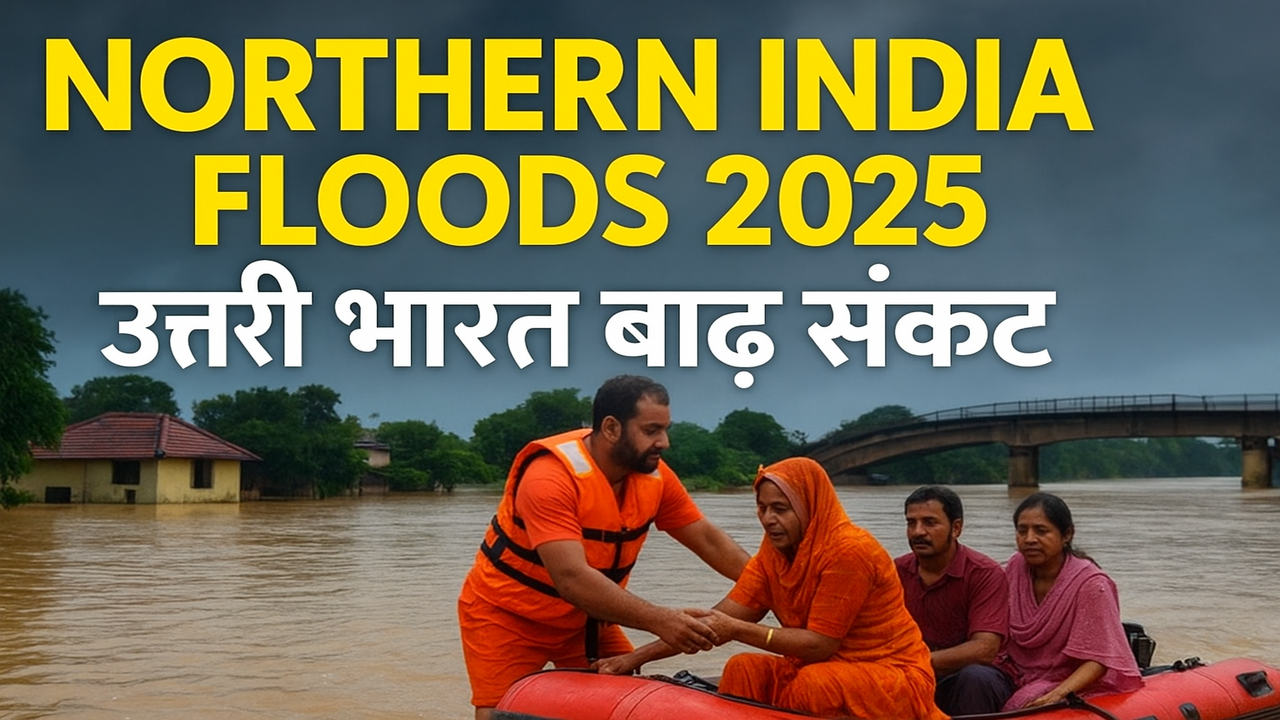Blog
Punjab to Delhi Under Water – India’s Climate Alarm

Northern India is experiencing one of its most destructive monsoon seasons in recent years. Torrential rains have triggered overflowing rivers, flash floods, and landslides, which in turn have forced thousands of families to leave their homes. States such as Punjab, Delhi, Uttarakhand, Himachal Pradesh, and Jammu & Kashmir are struggling to recover. This disaster is more than a seasonal flood; it strongly reflects the growing impact of climate change.
Punjab: Fields Under Water
Punjab, known as India’s food bowl, is suffering the most. Farmers watched in despair as 150,000 hectares of fertile farmland went under water. Villages near Amritsar and Gurdaspur turned into islands, while families climbed to rooftops to survive. Although volunteers and the army rushed in with boats, rations, and mosquito nets, the devastation continued to grow. Consequently, the state faces an enormous agricultural and humanitarian crisis.
Delhi: Yamuna River Surges Above Danger Mark
In Delhi, the Yamuna River surged past the danger mark. As a result, authorities evacuated more than 10,000 residents from low-lying areas. Streets around Kashmere Gate, Ring Road, and Yamuna Bazar filled with waist-deep water. Moreover, traffic collapsed, power cuts spread, and drinking water supplies became unsafe. Once again, the capital city exposed its fragile drainage system during extreme rainfall.
Himachal & Uttarakhand: Roads Blocked, Villages Stranded
Meanwhile, the Himalayan states endured continuous landslides and cloudbursts. The Kullu–Manali highway remained blocked, cutting off tourists and traders. Rescue teams worked day and night, and helicopters airlifted machinery to clear the routes. In Uttarakhand, several villages stayed stranded without food, medicines, or basic supplies. Therefore, both residents and relief workers faced life-threatening challenges.
The Looming Danger of Glacial Lakes
Experts have also warned about swollen glacial lakes in Ladakh, J&K, and Himachal Pradesh. If these lakes burst, massive floods—called Glacial Lake Outburst Floods (GLOFs)—could sweep through valleys within minutes. Authorities are monitoring the situation closely, but long-term solutions remain uncertain.
Relief and Government Response
Relief operations are underway across the region. NGOs, local communities, and state governments are distributing food packets, tents, and medicines. Haryana announced financial assistance of ₹5 crore each to Punjab and J&K. However, residents of Gurgaon criticized the decision, pointing out that even two hours of rainfall floods their city streets. This debate highlights how both rural villages and modern cities remain unprepared for extreme monsoon shocks.
Climate Change and Bigger Lessons
Scientists have consistently linked such events to climate change. Rising global temperatures increase the risk of erratic rainfall, while melting glaciers destabilize the Himalayas. Therefore, floods and landslides are becoming more frequent and more destructive. Unless India invests in stronger infrastructure, climate-resilient crops, and smarter urban planning, disasters like this will continue to repeat.
Conclusion
The floods in Northern India are a stark reminder of the urgent need for climate resilience. Cities require modern drainage systems, farmers need support for flood-resistant agriculture, and mountain states must prepare for sudden cloudbursts. Today, Punjab and Delhi are under water; tomorrow, any other region could face the same fate. The time to act is now.
